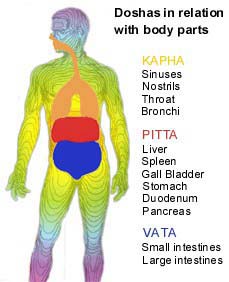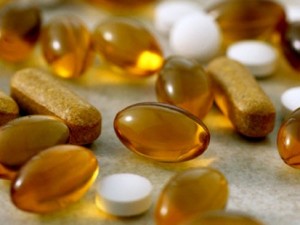Phytonutrient, within the context of natural health and nutrition, has come to refer to certain bioactive plant chemicals that humans eat and have, or may well have, significant positive effects on human metabolism.
Most phytonutrients are not essential for life, but more and more they appear to be essential for optimal health and longevity! They, therefore, may properly be classified as micronutrients, along with vitamins and minerals. The technical classification of the major groups of phytonutrients found in our diets includes terpenes, amines, organosulfurs, phenols, polysaccharides, and organic acids.
One food can contain several classifications of phytonutrients. For example, an orange contains terpenes (carotenoids and limonoids) and phenols (bioflavonoids). In this introductory article, we will briefly examine the major groups and sub-groups of phytonutrients and how they may contribute to optimal biological function.
The Terpenes-Carotenoids, Limonoids, Saponins and Chromonals: Powerful Antioxidants for Cancer Prevention, Optimizing Cardio-Vascular Dynamics, Protecting Vision
Terpenes are any of various unsaturated hydrocarbons, C10H16, found in essential oils and resins of plants.
Carotenoids, a fat-soluble group of naturally occurring plant pigments of the yellow, orange, red spectrum, are perhaps the most familiar of phytonutrients. Carotenoids function as powerful antioxidants and immuno-potentiaters. Carotenoids are considered potent membrane antioxidants due to their reactivity with singlet oxygen. Diets rich in carotenoids are linked with a decreased risk of heart disease, cancer, and degenerative eye diseases, such as macular degeneration and cataracts.1
Alpha-carotene, beta-carotene, and cryptoxanthin, as found in carrots, oranges, sweet potatoes and squash, are the main vitamin A precursors. Leafy green vegetables contain mostly lutein and zeaxanthin. Lycopene is most abundant in tomatoes, with smaller amounts in pink grapefruit, watermelon, guava, and rose hips. Astaxanthin, found mostly in red yeasts and red algae, is now fed to salmon, trout, crabs, krill and shrimp in “fish farms.”
Of note, some carotenoid-rich foods, like carrots and tomatoes, yield more beta-carotene and lycopene, respectively, when cooked. Lutein and lycopene require fat for optimal uptake of carotenoids, whereas dietary fiber inhibits absorption of lutein, lycopene, and beta-carotene by 40 percent to 75 percent.2,3
Limonoids are found in yellow/orange citrus fruit peels. Limonoids may be chemo-preventive agents, especially directed toward protection of the lungs.4,5,6 Eight ounces of orange juice usually contains approximately 19 mg of d-limonene.
Saponins are found abundantly in many beans, alfalfa, aloe and quinoa (keen-wah) seed. Saponin-containing plants tend to have a soapy texture, and are often called “natural detergents,” due to the foam that develops when heated, as when heating beans. Saponins form a complex with cholesterol, which is then excreted from the body. Saponins also inhibit the multiplication of cancer cells by interfering with their DNA.7
The most familiar chromanols are the vitamin E complex tocotrienols and the tocopherols. These two naturally occur in palm oils and whole grain germ and/or bran, yet research has shown that the biologic functions of tocopherols and tocotrienols are unrelated. Tocotrienols appear to inhibit breast cancer cell growth, whereas tocopherols have been most studied for their cardiovascular health effects.8
The Phenol Group: Flavonoids, Anthocyanidins, Catechins, and Lignans
Anti-inflammatory, Anti-clotting, Antioxidant, Immune Enhancers and Hormone Modulators
Phenols are a class of chemical compounds consisting of a hydroxyl group (-OH) attached to an aromatic hydrocarbon group. The simplest of the class is phenol (C6H5OH). It creates the blue, blue-red and violet colorations seen in berries, grapes and purple eggplant. Phenols protect plants and humans from oxidative damage. They block specific enzymes that cause inflammation and allergies, modify the prostaglandin pathways and, thereby, protect platelets from clumping.9 They help the liver detoxify and inhibit specific enzymes, such as the angiotensin-converting enzyme (ACE) that raises blood pressure.10
Although they were once lumped together as vitamin P, science has now discovered well over 1,500 phenol flavonoids! They are perhaps best known for their ability to enhance the effects of ascorbic acid. Along with vitamin C, flavonoids are well known for their ability to protect the vascular system by strengthening, maintaining and repairing capillaries.11 Flavonoids, including the isoflavones, may reduce the risk of cancer, either by enhanced detoxication or, as in the case of isoflavones, by occupying estrogen receptor sites.12
Anthocyanidins are phenols that provide cross-links that connect and strengthen intertwined strands of collagen protein. Collagen protein is the most abundant protein in the body, as it makes up a large proportion of muscle sheaths, skin, tendon, ligament, and bone matrix. Its blue pigment, as in blueberries, helps protect the retina from macular degeneration.13 Anthocyanidins are also powerful water-soluble antioxidants.
Larger doses are often useful in conditions wherein there is a profuse free radical cascade, such as trauma, inflammation, allergic reactions, and heavy exercise.
Catechins are the polyphenolic compounds that provide the antioxidant activity of black, green and white tea. The most common catechins are gallic esters. The most potent is epigallocatechin gallate (EGCG). Protective benefits are thought to include promotion of apoptosis of cancer cells in prostate, stomach, skin, lung, breast and colorectal tissues.14
Lignans are found in seeds and grains, especially flaxseed. The lignan found in flaxseed is called secoisolariciresinol glucoside (SDG). Lignans are weak phytoestrogens that also have antiviral, antibacterial, antifungal, antioxidant, and immune enhancing properties.15
Lignans are not to be confused with lignins, which are non-carbohydrate dietary fibers that, along with polysaccharides, occur in the cell walls of plants.
Polysaccharides Fiber, Glyco-Nutrients and Phytosterols: Modulate Cholesterol Absorption, Alimentary Transit Time, Glycemic Response, Hormone Metabolism, Immune Function, and Inflammatory Physiology
Polysaccharides are complex carbohydrates, made up of chains of multiple sugar molecules. Examples of polysaccharides include cellulose, starch, and dextrin. Both soluble and insoluble fibers are made from polysaccharides. The former absorb cholesterol and lower glycemic response, while the later promote bowel movements. The immune enhancing effects of ginseng, aloe vera or beta glucan from oats or mushrooms come, in a large part, from sugar-protein-receptor complexes on their cell walls, now called glyco-nutrients.
Phytosterols are polysaccharide-lipid complexes known particularly for their cholesterol lowering abilities.
Nuts and seeds are the richest source of phytosterols in the Western diet. Phytosterols are poorly absorbed. They lower cholesterol by interfering with its absorption in the small intestine. Just three grams of phytosterols daily shows significant lipid lowering effects.16 Phytosterols can also mimic hormone precursors or modulate hormones. For example, Swedish tree pollen, pumpkin seeds, pygeum, and saw palmetto are all used in cases of benign hyper-trophic prostate disease (BHP) and prostatitis. These phytosterols inhibit the conversion of testosterone to dehydroxytestoterone (DHT).17
The Organosulfur Group: Indoles, Isothiocyanates, and Thiosulfonates
Detoxifiers, Cardiovascular Risk Reducers, and Non-Specific Immunity Supporters
Organosulfurs are organic compounds containing sulfur (-SH). As phytonutrients, they provide sulfur vital for Phase II enzyme activities. Specifically, organosulfurs provide glucosinolates which are converted into several bio-transformation products in the human body, particularly indole-3-carbinol, isothiocyanates, and thiosulfonates.
The indoles and isothiocyanates are most especially found in the cruciferae family of brassica and mustard plants. These include horseradish, cabbage, broccoli, Brussels sprouts, kale, arugula, bok choy, cauliflower, mustard seeds and greens, watercress, turnip greens, daikon, wasabi, and kohlrabi. These help the liver break down toxins and potential carcinogens, especially toxic estrogen metabolites.
The thiosulfonates are predominant in the allium family, where garlic, onion, leek, asparagus, shallots, chive and scallion are representative.18 Though the thiosulfonates are also able to assist Phase II detoxication and, thereby, enhance protection against carcinogenesis, they are perhaps better known for their ability to promote a more favorable HDL-LDL ratio, lower blood pressure and stimulate non-specific immunity.
Organic Acids: Antioxidant Cancer Preventives, Liver Protectors, and Inflammatory Mediators
An organic acid is an organic compound that is an acid. Perhaps the most common example is the carboxylic acids, whose acidity derives from a carboxyl group-COOH. Phytochemicals in this group are commonly found in grains, herbs, teas, a few vegetables and some fruits.13 They include oxalic acid found in spinach, rhubarb, tea and coffee; tartaric acid in apricots and apples; cinnamic acid in aloe and cinnamon; caffeic acid in burdock and hawthorn; ferulic acid in oats and rice; gallic acid in tea; coumaric acid in turmeric; salicylic acid in spearmint; and tannic acid in nettles, tea, and berries. They are powerful antioxidants, anti-inflammatories, and support liver detoxication.19
Perhaps of most current interest is ellagic acid, which is found in guava, currants, apples, grapes, strawberries and, most particularly, in red raspberries and wild chart cherries. According to the Hollings Cancer Institute at the University of South Carolina, ellagic acid is a proven anti-carcinogen, anti-mutagen, and anti-cancer initiator!20
The Amines: Carcinogen Deactivators and Enzymatic Therapy
Amines are organic compounds that contain nitrogen (-NH) as the key atom of the functional group. The amines include both chlorophyll (as in chlorella, spirulina, hydrilla, and the leafy greens and grasses) and plant enzymes (as in papain and bromelain). Chlorophyll is well known to detoxify carcinogens found in cooked muscle meats (heterocyclic amines), smoked or barbecued foods (polycyclic hydrocarbons), and peanut mold (aflatoxin).21 Chlorophyll has also been recognized for its anti-inflammatory, anti-mutagenic, and antioxidant properties.22,23
Chlorophyll has been cited as strengthening the immune response, therapeutic for inflammation of the ear and the mucous membrane of the nose and sinuses, supportive of normal kidney function, accelerating wound and ulcer healing, and reducing fecal, urinary, and body odor in geriatric patients.24,25
Plant enzymes are well accepted as useful in assisting digestion, having the advantage of being active in a wide PH range.26 Taken in between meals, they assist in injury resolution by increasing the blood enzymes available to digest proteins related to fibrolytic and inflammatory process and immune responses.27
In Conclusion
We have made a very cursory review of the major phytonutrient compounds, namely the terpenes, polysaccharides, phenols, organosulfurs, organic acids, and amines. These can be grouped into families based on their chemical structures. Phytonutrients have many salubrious physiological effects. These effects are likely a major factor in the well-documented reduction in the incidence of the common diseases of aging in those who consume a largely plant-based diet, abundant in fruits, vegetables and greens, as the United States Department of Agriculture recommends.28
John H. Maher, D.C., oversees physician and consumer education for BioPharma Scientific, creators of NanoGreens10. Dr Maher maintained an active chiropractic practice for 25 years. He has taught nutrition to health professionals nationally for the past 15 years. Dr. Maher is past post-graduate faculty of NYCC Academy of Anti-Aging Medicine, a Diplomate of the College of Clinical Nutrition, and a Fellow of the American Academy of Integrative Medicine. To learn more visit www.nanogreens10.com
References
1.Functional Foods and Nutraceuticals, March 2003, p. 64.
2.Reidl, J. et al. Some dietary fibers reduce absorption of carotenoids in women. J Nutr 1999 Dec: 129 (12): 2170-6
3.Roodberg AJ, et al. Amount of fat in the diet affects lutein esters but not of alpha carotene, beta carotene, and vitamin E in humans. Am J Clin Nutr 2000 May; 71(5):1187-93
4.Wattenberg LW, Coccia JB., Inhibition of 4-(methylnitrosamino)-1-(3-pyridyl)-1-butanone carcinogenesis in mice by D-limonene and citrus fruit oils. Department of Laboratory Medicine and Pathology, University of Minnesota, Minneapolis 55455.Carcinogenesis. 1991 Jan;12(1):115-7.
5.Nair, P., et al, Am J Clin Nutr, 40 (4 Suppl): 927-30, Oct. 1984
6.Vigushin DM, Poon GK, Boddy A., et al., Phase 1 and pharmanokenetic study of d’limonene in patients with advanced cancer, Cancer Chemother Pharmacol, 1998; 42: 111-117
7.http://www.molbio.princeton.edu/courses/mb427/1999/projects/9918/phyto.htm
8.Hayes, K.C., et al. Exp Biol Med, 202: 353-359, March 1993
9.Hertog, M.G., et al. Lancet, 342: 1007-11, Oct. 23, 1993.
10.Murray, R.K., et al. Harper’s Biochemistry, 23 ed.: 196. New York; Appleton & Lange, 1994
11.Kinsella, J.E., et al. Food Technology, 47: 85-90, April 1993
12.Northrup, C. Women’s Bodies, Women’s Wisdom: 305. New York; Bantam Books, 1994.
13.http://www.whfoods.com/genpage.php?tname=foodspice&dbid=8
14.Huber, L.G., ND, Green Tea Catechins and L-Theonine in Integrative Cancer Care, Focus, May 2003, p. 4
15.http://www.flaxlignaninfobureau.com/RSG_Flax/DigiFolder.nsf/
htmlViewDocuments/6781B0E1EDC947CCC125712A0059EF1E
16.Jones PJ, Raieini-Sarjaz M. Plant sterols and their derivatives: the current spread of results. Nutr. Rev. 2001:59:21-4
17.Buck AC, Phytotherapy for the prostate. Br. J Urol. 1996:78:325-6
18.Teyssier C, Amiot MJ, Mondy N, Auger J, Kahane R, Siess MH., Effect of onion consumption by rats on hepatic drug-metabolizing enzymes, Food Chem Toxicol. 2001 Oct;39(10):981-7.
19.Craig W. Phytochemicals: guardians of our health. J Am Dietetic Assoc 1997;97(Suppl 2):S199-204
20.http://www.ellagic-research.org/ http://www.ellagic-research.org/clinical_studies.htm
21.Ziegler, Jan. It’s not easy being green: chlorophyll being tested. J Natl Cancer Inst 1995 Jan 4;87(1):11
22.Harttig U, et al. Chemoprotection by natural chlorophylls in vivo: inhibition of dibenzo[a,l]pyrene-DNA adducts in rainbow trout liver. Carcinogenesis 1998 Jul;19(7):1323-6.
23.Gentile JM, et al. The metabolic activation of 4-nitro-o-phenylenediamine by chlorophyll-containing plant extracts: the relationship between mutagenicity and antimutagenicity. Mutat Res 1991 Sep-Oct;250(1-2):79-86.
24.Duke, J.A. Handbook of phytochemical constituents of GRAS herbs and other economic plants. Boca Raton, FL: CRC Press, Inc. 1992. p 28.
25.Ibid. 21
26.http://www.enzymestuff.com/digestion.htm
27.http://library.advanced.org/24206/enzyme-therapy.html
http://www.health.gov/dietaryguidelines/dga2005/document/html/chapter5.htm
 It seems that every month or so, we hear about a new magical anti-inflammatory supplement. Our best bet is to ignore the rhetoric and focus on the big three that have stood the test of time, those being ginger, turmeric and garlic. Garlic is, of course, the least appealing as it is…well, it’s stinky stuff. And, after eating lots of garlic, you may even offend yourself, along with all of those unlucky enough to be in your immediate vicinity. For this very reason, I endeavor to use odor free garlic.
It seems that every month or so, we hear about a new magical anti-inflammatory supplement. Our best bet is to ignore the rhetoric and focus on the big three that have stood the test of time, those being ginger, turmeric and garlic. Garlic is, of course, the least appealing as it is…well, it’s stinky stuff. And, after eating lots of garlic, you may even offend yourself, along with all of those unlucky enough to be in your immediate vicinity. For this very reason, I endeavor to use odor free garlic.



 The term whole food supplements makes many docs feel warm and fuzzy. We conjure up notions of wholeness and wellness. Many DC’s contact me regarding the issue of which supplements to use, whole food or synthetic.
The term whole food supplements makes many docs feel warm and fuzzy. We conjure up notions of wholeness and wellness. Many DC’s contact me regarding the issue of which supplements to use, whole food or synthetic.